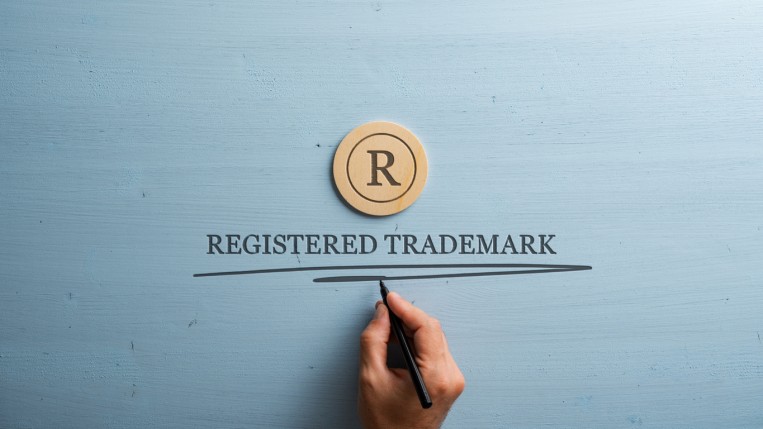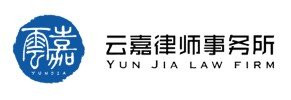Since 2022, the China Trademark Office (CTMO) has undertaken a series of reforms to the trademark case examination system, including both the CTMO stage and the Trademark Review and Adjudication Board (TRAB) stage. This reform can be seen as an advancement in the era of trademark examination, as trademark cases will undergo more stringent, meticulous, multi-faceted reviews that integrate current events. The outcomes of the examination will provide stronger protection for the legal rights and claims of rights holders. This article will utilize specific cases to share insights into the reforms within the trademark case examination system over the past six months.
Elevated requirements for trademark usage compliance
At the beginning of 2022, during the examination of cases of non-use cancellation, the CTMO further refined the scrutiny of evidence provided by the respondents. The examination of evidence of use has become more stringent, especially for evidence within the same subclass. Evidence from the same subclass will only be deemed effective within that subclass; it will not affect other subclasses. Therefore, in the future, the requirement for rights holders to submit evidence of use in cancellation cases will become higher, and the difficulty in presenting such evidence will also increase. This trend aligns with the post-reform direction of trademark examination, encouraging legitimate trademark use and reducing the existence of trademarks that are registered but not used.
Simultaneously, in the examination of cases of review of refusals, a basis for refusal has emerged, centered around “malicious registration without the intent of actual use.” This can be seen in the refusal decisions issued by the TRAB in July 2022, such as the decisions concerning trademarks with application numbers 55490511, 55522275, 55498065, 55495121, 55525185, 55504732 and 56715563. In these decisions, the TRAB explicitly stated that “the applicant has applied for a large number of trademarks within a short period, which goes beyond the scope of normal business operations and constitutes malicious trademark registration without the intent of actual use”, which led directly to the TRAB’s refusal of the applications. Thus, it is evident that both present and future examination trends will increasingly consider the intent and actual usage of registered trademarks as significant factors in the examination of trademark cases, playing a crucial role across various types of cases.
Release of ‘Norms for Suspending Trademark Review’
In June of this year, the CTMO issued an interpretation of the “Norms for Suspending Trademark Review,” outlining seven situations where suspension is mandatory and three situations where it can be applied. This move is expected to contribute to the overall resolution of cases involving review of refusal, administrative litigation, and related cases including non-use cancellation review, opposition review, and invalidation review.
Establishing foundations and motivation
Actively addressing societal concerns, resolving long-standing issues of lack of coordination between various administrative authorization and confirmation procedures, as well as issues related to lack of coordination between administrative and judicial procedures, situation changes, procedural inactivity, and the generation of new cases from existing ones. This aims to reduce the burden on legitimate rights holders caused by repeated applications and exhaustion of legal procedures to avoid post-clearance challenges from other applicants, thus lowering the unnecessary systemic costs associated with obtaining trademark exclusive rights. This ensures that the legislative intent of the trademark law, to promote timely authorization and confirmation of legitimate trademark rights, is realized.
Coordinating with source governance efforts in judicial procedures. In cases where the parties contest refusal review decisions and file administrative lawsuits, the Beijing Intellectual Property Court employs pre-litigation mediation measures for cases where the trademark rights status cited in the case is undetermined.
Furthermore, based on current statistics, the processing time for opposition and invalidation reviews generally ranges from one to six months longer than that for refusal review, and the processing time for cancellation review is similar to that of refusal review. This time gap implies a higher probability of changes in the status of cited trademark rights during the pre-litigation mediation period. Therefore, it is necessary to suspend the examination of refusal review cases to save resources for the parties, administrative bodies, and the judiciary.
It is based on legal norms and regulations. The legal basis for this includes not only the existing provisions in Article 35(4) and Article 45(3) of the current trademark law regarding suspension procedures for non-registration review and invalidation review, as well as Article 11 of the current Regulation on the Implementation of the Trademark Law regarding circumstances where the time limit is not calculated, but also refers to the suspension of civil litigation. It also considers the suggestions for amending the trademark law to explicitly introduce suspension procedures for refusal review and the suggestions for amending Article 11 of the Regulation on the Implementation of the Trademark Law.
It ensures feasibility. After the implementation of standardized procedures, the proportion of cases suspended for review is expected to increase significantly. To respond to this change, on one hand, the rate of online application for review cases has already exceeded 80 percent, freeing up space for storing case files. On the other hand, respecting the wishes of the parties, whether or not the examination of a refusal review case is suspended is a necessary condition based on the applicant’s request for suspension (except for cases where the examiner initiates the suspension for cases involving cited trademarks suspected of malicious registration). In this context, the suspension request does not necessarily have to be submitted as a separate application; waiting for the result of the examination of the cited trademark case is often a primary basis for the applicant’s grounds of review, and whether the suspended case can resume examination is also a key concern for the applicant’s progress.
Achieving standardization. The term “may” used in the past for possible suspension measures has sometimes led to inconsistencies in actual execution. The current norms have revised all cases where suspension is possible to cases where suspension is mandatory, thereby reducing the degree of discretion in execution.
Specific contents of the norms
The principle of suspension is based on necessity. Only if the determination of prior rights has a substantive impact on the review outcome should the examination be suspended. If other review reasons or the determination of other rights’ status is sufficient to determine the conclusion of the case, then the examination should not be suspended.
The norms specify seven explicit situations where suspension is mandatory and three situations where it may be applied.
The mandatory situations apply to cases involving refusal review, non-registration review, and invalidation review, and they are as follows:
- The disputed trademark or cited trademark is in the process of name change or assignment, and after the change or assignment, there is no longer a conflict of rights between the disputed trademark or cited trademark.
- The cited trademark has passed its expiration date and is in the process of renewal or the extension period for renewal.
- The cited trademark is in the process of cancellation or withdrawal.
- The cited trademark has been revoked, declared invalid, or has expired and is not renewed for more than one year from the date of revocation, invalidation, or expiration when the case is examined. It should be noted that if the refusal reasons do not involve Article 50 of the Trademark Law, there is no need for suspension. According to the Trademark Examination and Review Guidelines, if a cited trademark has been revoked due to non-use for three consecutive years, the guidelines should be followed.
- The cases involving the cited trademark have already concluded, and the conclusions are awaiting effect or the execution of effective judgments is awaiting retrial.
A situation specifically applicable to non-registration review and invalidation review cases is consistent with the provisions of Article 35(4) and Article 45(3) of the current trademark law, which is:
- The conclusion of another case involving prior rights must be based on a case that is currently being examined by a people's court or is being processed by an administrative authority.
A situation specifically applicable to refusal review cases is:
- The determination of the cited trademark’s rights status must be based on another case that is currently being examined by a people's court or is being processed by an administrative authority, and the applicant must explicitly request the suspension of the review.
To maximize the interests of legitimate rights holders, the application’s timing and applicant are no longer differentiated for cases involving the cited trademark. However, in cases where the applicant for refusal review requests suspension, they should provide a clear explanation of the cited trademark’s registration number, its status, its relationship with the current case, and other specific details. The principle of necessity must still be satisfied for suspension to occur.
The situations where suspension may be applied include three types:
- If the cited trademark involved in a refusal review case has been subject to a request for invalidation and the registered owner of the cited trademark has been found to have engaged in malicious registration as per Article 4, Article 19(4), or Article 44(1) of the trademark law in another case, the review may be suspended. The difference between this situation and situation (7) mentioned above is that the applicant does not have to request suspension; the examiner can independently decide whether to suspend based on the specific case, thus effectively reducing the burden of repeated applications and exhaustion of legal procedures caused by malicious registrations.
- If the case requires waiting for the result or decision of another case that is identical or relevant, the review may be suspended based on the needs of the specific case. This situation does not necessarily involve the cited trademark; therefore, it does not require the applicant to request suspension. However, to harmonize administrative authorization and confirmation procedures, administrative and judicial procedures, unify review standards, avoid procedural loops caused by contradictory conclusions, and effectively reduce the burden on parties, examiners can decide whether to suspend based on the specific case.
Additionally, there are other situations where suspension may be applied. For situations that are not exhaustively covered, based on the principles of necessity and favoring legitimate rights holders, examiners can decide whether to suspend based on the specific case, using situation (7) mentioned above as a reference.
- The norms provide explicit provisions regarding the timing requirement for applying for suspension, the methods to apply, and the necessary conditions for resuming the review after the suspension has been lifted.
To safeguard the interests of legitimate rights holders while considering efficiency, fairness, and stability of the trademark registration system, examiners applying for suspension should do so within the specified timeframe. For applicants in refusal review cases, they should provide written explanations of their actions to overcome obstacles to cited trademark rights within three months from the date of filing the supplementary materials for refusal review, at the latest.
For situations where a specific request for suspension is required from the applicant for refusal review, this request can be included in the reasons for refusal review. The request for suspension should specify the cited trademark’s registration number, its status, and its relationship with the current case.
In principle, the party requesting suspension should also request the lifting of suspension. After the determination of the cited trademark’s rights status, the applicant should submit relevant evidence materials. If the examiner receives the applicant's supplementary evidence and confirms that the conditions for suspension have been eliminated, the review should be resumed.
After the elimination of the various suspension situations mentioned above, examiners should review cases based on the facts as they stood at the time of review and conclude the cases according to the specified time requirements.
The authors relied on the Trademark Office of China National Intellectual Property Administration website database in the preparation of this story.










